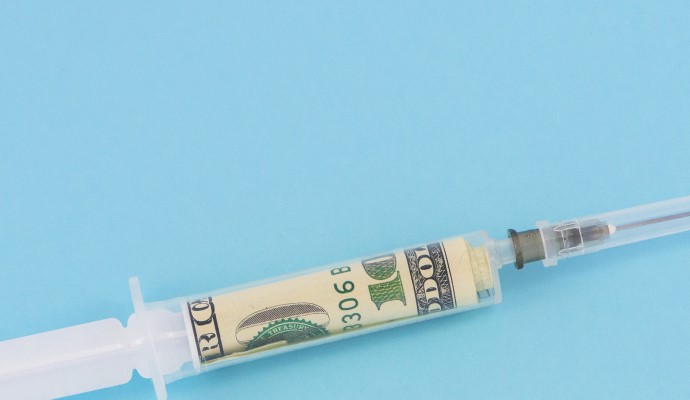States with More Uninsured Received Greater COVID-19 Treatment Funding
States with the largest uninsured populations received greater shares of COVID-19 treatment funding. However, states with Medicaid expansion used less than their share of funds.

Source: Getty Images
- An analysis published in JAMA Health Forum linked uninsured population size to federal reimbursement for uninsured COVID-19 treatment.
The Health Resources and Services Administration (HRSA) has reimbursed providers and hospitals $2.5 billion for COVID-19 treatment of uninsured patients as of September 2021. The program has been operating as a Medicare-like fee-for-service claims reimbursement system, paying healthcare clinicians and facilities for uninsured COVID-19 related treatment at the Medicare payment rate.
To conduct the study, researchers used HRSA claims to evaluate the state’s uninsured COVID-19 treatment reimbursements compared to the distribution of COVID-19 PRF funds and the percent of the uninsured population.
The analysis results showed that states containing a greater uninsured population received more shares of the COVID-19 uninsured treatment funding.
Researchers analyzed the differences in reimbursement rates between Medicaid expansion states and non-Medicaid expansion states. The study included data from 12 non-Medicaid expansion states and 28 Medicaid expansion states.
The researchers found that 33 percent of the non-expansion states had reimbursement ratios above 1.00.
Those states included Texas with a reimbursement ratio of 1.78, Georgia with a ratio of 1.33, Tennessee with a ratio of 1.12, and North Carolina with a ratio of 1.07.
A reimbursement ratio above 1.0 equates to a larger share of the federal funds to a state than the state’s share of the uninsured population. Conversely, a reimbursement ratio of less than 1.0 indicates less treatment reimbursement to a state compared to its share of the uninsured population.
“States with the largest uninsured populations such as Texas, California, and Florida were among those with the highest reimbursement ratios, suggesting that the states with the greatest population demands received the greatest share of funds,” the researchers stated in the analysis.
“Second, Medicaid expansion states generally used less than their proportionate share of the program distribution.”
Among the Medicaid expansion states, 3 out of 38 states (8 percent) had a reimbursement rate above 1.0. Those states included New Jersey with a reimbursement ratio of 2,63, Maryland with a ratio of 1.55, and Nevada with a ratio of 1.01.
Lastly, the District of Colombia had a reimbursement ratio of 4.25.
Hospitals rely on these reimbursement funds since COVID-19 has stressed hospital operating margins. However, the COVID-19 uninsured treatment funding has only paid out a limited reimbursement to providers, previous reports show.
According to a 2020 report from the Kaiser Family Foundation (KFF), a newer policy that only allowed reimbursement on the condition that the patient’s primary diagnosis is COVID-19 limited reimbursement to providers for the treatment of uninsured COVID-19 patients.
“The reimbursement program is, by design, different from policy approaches that would instead promote access to affordable health coverage, which would provide broader protections for people who are uninsured or at risk of becoming uninsured,” stated the KFF report..
